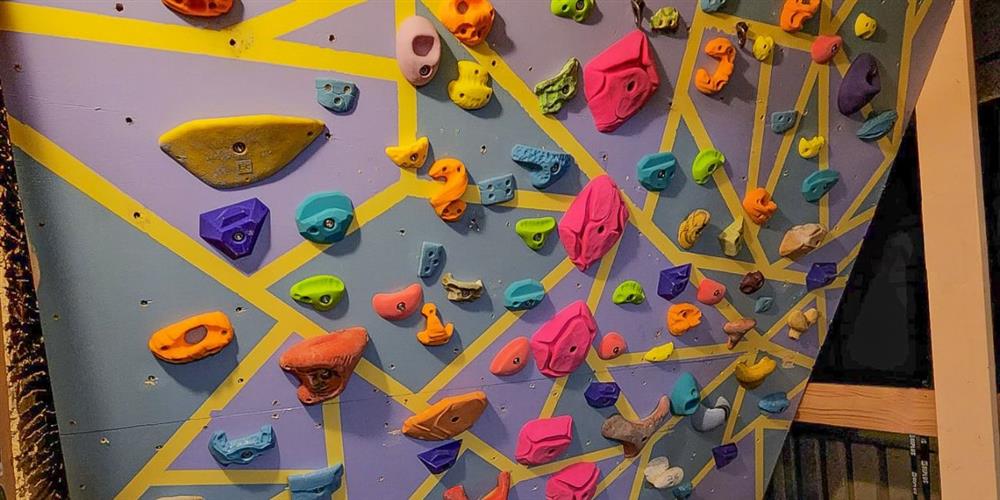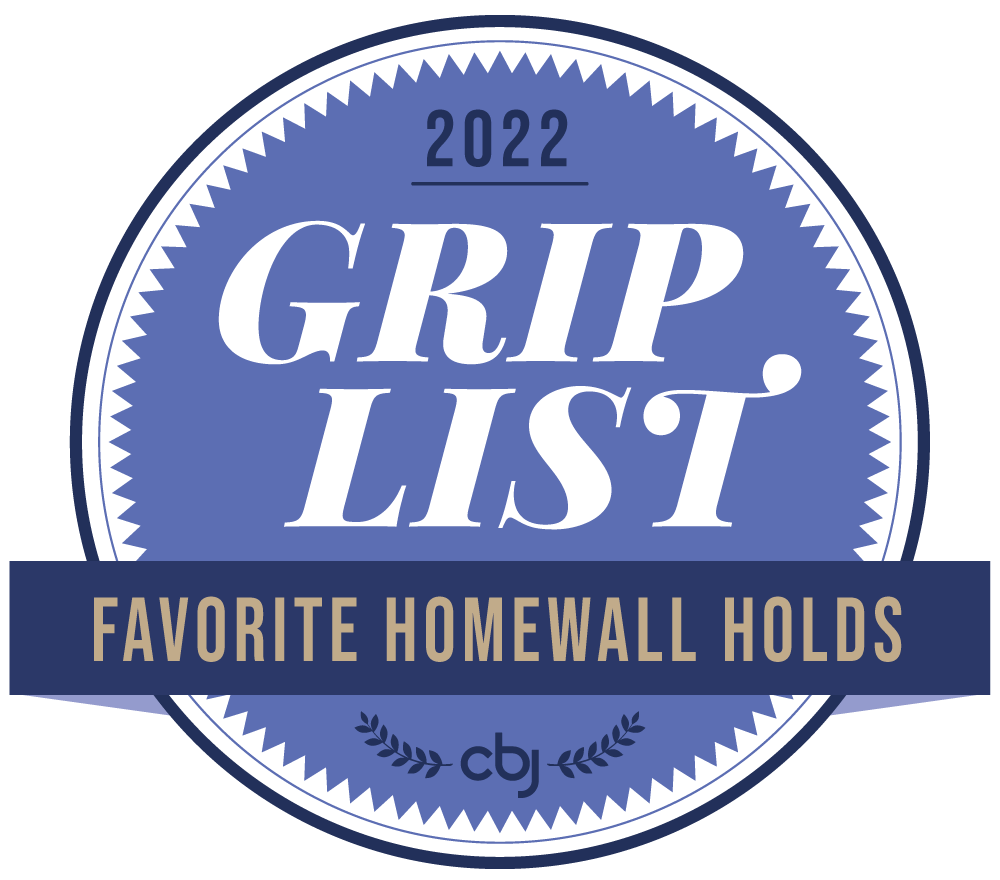Welcome to the world of crimp grips, which are crucial elements in the arsenals of all serious climbers. Whether you’re scaling indoor walls or tackling natural rock formations, mastering crimp grips can significantly enhance your climbing performance. But what exactly are crimp grips?
Our guide will explain everything you need to know to crimp like a pro climber, from the types of crimp grips to technique tips and more! Keep reading to learn what all climbers should do about crimp grips.
Types of Crimp Grips
Crimp grips come in several varieties, each offering unique advantages and challenges. The three primary types of crimp grips are open-hand, closed-hand, and half crimps. Understanding the differences between these grips is vital for improving your climbing technique and ensuring versatility on various routes.
Open-Hand Crimps
Open-hand crimps involve grasping the hold with an open, relaxed hand position. This grip puts less strain on your fingers than other types.
Open-hand crimps are beneficial for endurance climbing because they cause less fatigue and reduce the risk of injury. They’re also useful for larger holds and slopers where a full crimp might not be possible.
Closed-Hand Crimps
Closed-hand crimps, often called full crimps, are the most aggressive and powerful type of crimp grip. In this position, the climber bends their fingers sharply at the first knuckle, and the thumb wraps over the index finger for additional support.
Closed-hand crimps are ideal for small, sharp edges where maximum grip strength is necessary. However, this grip places significant strain on the finger tendons, so you should only use this technique sparingly to avoid injury.
Half Crimps
Half crimps offer a middle ground between open-hand and closed-hand crimps. In a half crimp, the climber bends their fingers at a moderate angle, and the thumb may or may not wrap around the index finger.
This grip provides a balance of strength and endurance, making it a versatile option for many climbing scenarios. Many climbers find the half crimp to be a comfortable and sustainable grip that reduces the risk of injury while still offering substantial grip strength.

Technique Tips for Crimp Grips
Mastering the proper technique for crimp grips is essential for efficient and safe climbing. Here’s a breakdown of the key elements involved.
Hand Positioning
Hand positioning is the foundation of an effective crimp grip. Begin by placing your fingertips on the hold’s edge, ensuring you evenly space and securely position them.
For open-hand crimps, maintain a relaxed finger posture with minimal bend. For closed-hand crimps, bend your fingers sharply at the first knuckle and wrap your thumb over your index finger. In a half crimp, opt for a moderate finger bend without excessive strain.
Finger Strength
Finger strength is paramount for maintaining a secure crimp grip. Regularly training your finger muscles will improve your ability to hold onto small edges and prevent fatigue during climbs. To build robust finger muscles, incorporate exercises such as hangboarding, finger curls, and grip strengtheners into your routine.
Body Positioning
Body positioning plays a crucial role in maximizing the efficiency of your crimp grip. Keep your body close to the wall and engage your core muscles to maintain balance and stability.
Use your legs to generate power and reduce the load on your fingers. By distributing your weight evenly and maintaining proper body alignment, you can enhance your overall climbing performance and reduce the risk of strain.
Safety and Injury Prevention
Crimp grips, while powerful, are demanding on your fingers and tendons. Prioritizing safety and injury prevention is essential for long-term climbing success.
Crimp Grip Warm-Up
Start by incorporating a thorough warm-up routine to prepare your muscles and tendons for the demands of crimping. Focus on dynamic stretches, finger warm-ups, and light climbing to increase blood flow and flexibility.
Post-Climb Cooldown
After climbing, cool down with gentle stretches and mobility exercises to promote recovery and reduce muscle stiffness. Rest is equally important. Give your fingers adequate time to recover between climbing sessions to prevent overuse injuries. If you experience pain or discomfort, take a break and seek advice from a medical professional or experienced climber.

Training for Crimp Grips
Another key aspect is training. If you want to crimp like a pro climber, you have to train like one. Here are some tips and exercises to help you improve your crimp grip strength and endurance.
Hangboarding
Hangboarding is one of the most effective ways to train for crimp grips. Use a hangboard with various edge sizes to simulate different crimp grip scenarios.
Start with shorter hangs and gradually increase the duration as your strength improves. Focus on maintaining proper form and avoid excessive strain on your fingers.
Finger Curls
Climbers should also conduct finger curls with dumbbells or resistance bands to improve finger strength. Hold the weight with your fingers and perform curling motions to target the finger flexor muscles. This exercise helps build the finger strength necessary for maintaining secure crimp grips.
Grip Strengtheners
Grip strengtheners, such as grip balls or putty, are excellent tools for improving finger strength and endurance. Squeeze and manipulate the grip strengthener to work the muscles in your fingers and hands. Focus on stamina, exercising your grip for longer periods to train for the endurance challenge of climbing.
Gear Guide
Choosing the right gear is essential for practicing crimp grips effectively and safely. Here are some recommendations for the best climbing equipment.
Climbing Holds
Invest in high-quality crimp climbing holds that offer a variety of grip options. At Atomik Climbing Holds, we provide a wide range of holds specifically for crimp grip training. Look for holds with different edge sizes and textures to simulate real climbing scenarios.
Fingerboards
Fingerboards, also known as hangboards, are essential tools for crimp grip training. Look for fingerboards with multiple edge sizes and shapes to challenge your finger strength and technique. New ones will last longer, but you can often find affordable used boards from other climbers online.
Climbing Shoes
While you may not be thinking of your footwear, choosing the right climbing shoes can significantly impact your grip performance. Look for shoes with a snug fit and sticky rubber soles that provide excellent traction on small holds. It may not seem like much, but you’ll immediately feel the difference and ease in climbing with a pair of quality climbing shoes!
Find Climbing Holds at Atomik Climbing Holds
We hope our guide helps you master the crimp grip like no other. If you’re looking to add crimpers or any other kind of climbing hold to your climbing wall, we have you covered!
Atomik Climbing Holds offers a huge selection of climbing holds of all kinds and sizes for all ages and skill ranges. Plus, our fast turnaround time means you get your holds faster so that you can start climbing sooner! Browse our inventory online, or contact our staff to talk to one of our climbing hold experts today.




Leave your comment